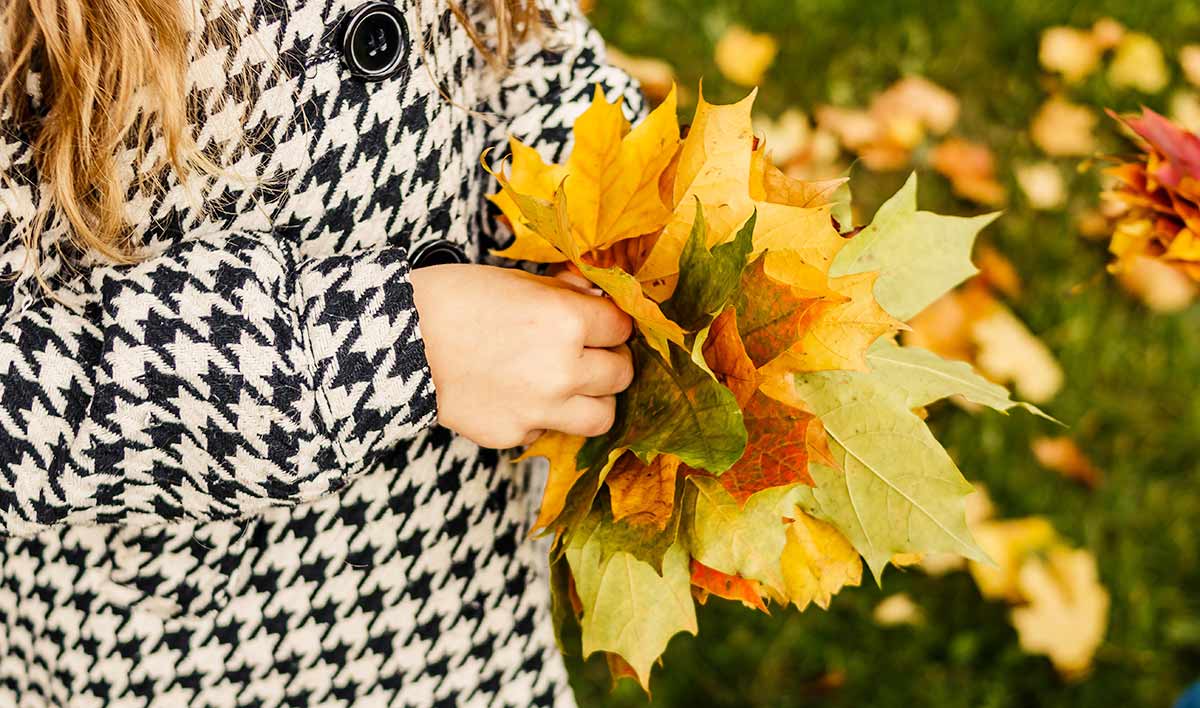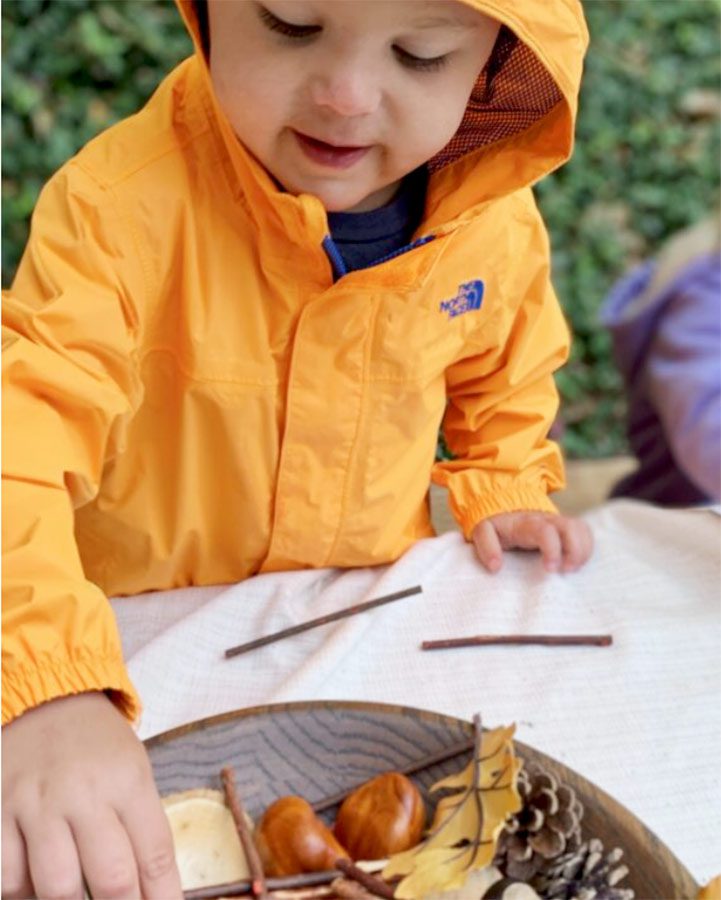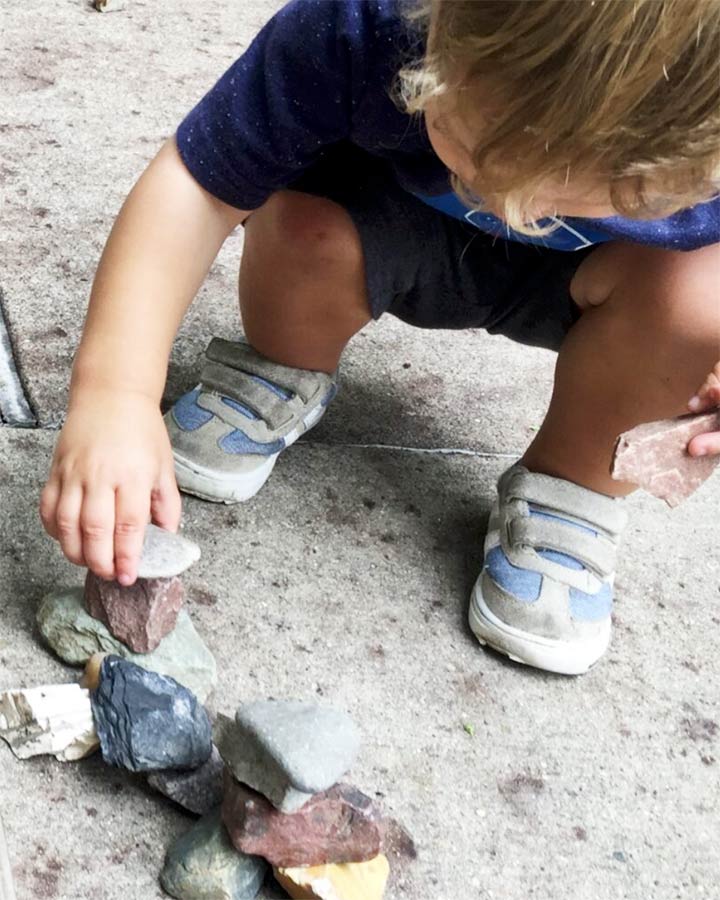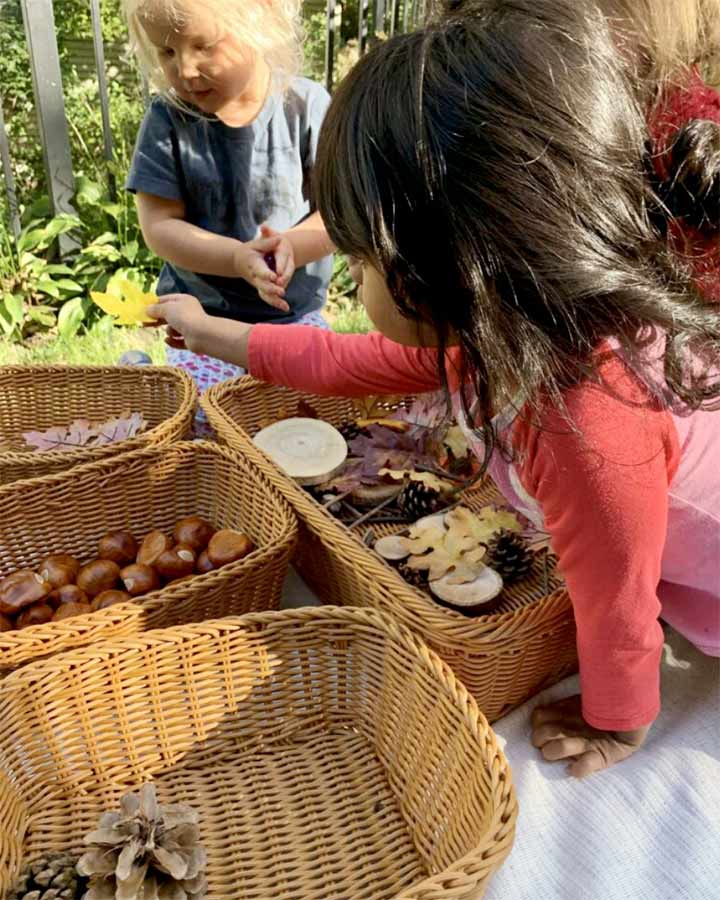Treasure Hunt
Introduction
Do you have a little collector in your family? That child who can turn a 5-minute walk into a 15-minute treasure hunt? The child who fills his or her pockets with treasures and then loads up your pockets with the overflow? Child-led collecting and sorting expeditions are worth their weight in gold as your early learner builds a strong foundation for math!

Gather Materials
- Bag or bucket for collecting treasures
Note: Small parts pose a choking hazard and are not appropriate for children age five or under. Be sure to choose lesson materials that you feel are safe for your child and that you are comfortable letting your child use.
Activity
If an object attracts your child's attention and your child reaches out to touch it, that's the moment when child-led learning begins.
So grab a bag, a basket or a bucket, take a walk and see what sparks your child's imagination. A capacious pocket comes in handy on these expeditions!
Along the way, observe the collecting habits of your child. What captures your child's attention? What treasures does your child deem worthy of pocketing?
When you return home, lay out all of the treasures. Your child will naturally begin to sort the collected items into piles or "sets."
Separating will come very naturally as your child sorts acorns into one pile and bottle caps into another. Your child may group by color, shape, texture or weight—or organize the objects in a line by size or other attributes.
Sorting helps build your child's analytical thinking skills, which are the lifeblood of mathematics.
Sorting activities also offer opportunities to introduce math vocabulary words such as more and less. Young children have an innate sense of more and less. They always know if someone has more than they do! Children can learn number sense simply by playing with their collections.
If the grouping of sets leads to counting, this is another great opportunity for your child to build foundational math skills. It doesn't matter how high a preschooler can count. A child’s sense of what those numbers actually mean develops gradually. We call this “understanding number sense”— a skill that requires your child to associate numbers with actual quantities.
There are three core counting principles:
- Rote-counting sequence: There is an ordered sequence of number names. Counting involves using the same sequence each time, starting with one. By using counting songs and moving each object as you give it a "name," you can help your child learn the counting sequence.
- One-to-one correspondence: One number from the counting sequence is assigned to each object in a collection. Instruct your child to put each object into a container or slide it across the table as it is counted.
- Cardinality: The last number assigned to an object when counting a collection indicates the total quantity of objects in the collection. Ask: "How many?" If your child doesn't know the answer to this question, count the objects together and note the last number that you counted as you push all of the objects together into a group.
Let your child set the pace. If your child just wants to collect and sort, that's great!
Remember to take it slow and make it fun. Children develop at different rates and have different learning styles. They will master early math concepts in their own time and in their own ways.
In the meantime, enjoy the treasure hunt!


